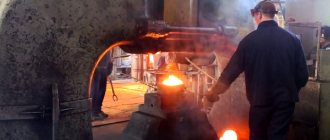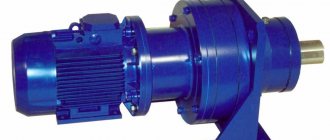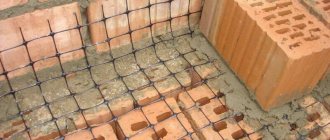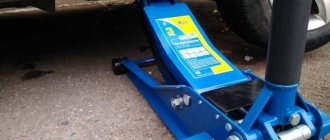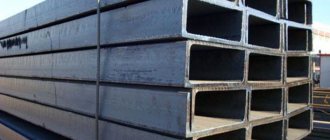Drills constitute a large category of cutting tools designed to produce round holes in hard materials and workpieces. Drilling occurs as a result of the mechanical action of a rotating drill fixed in a special driven tool or machine on the material being processed. Classic drives for drill rotation are:
- hand and electric drills;
- hammer drills;
- drilling and turning machines.
It is based on these characteristics that all produced drills are combined into one general category of turning and metalworking tools. At the same time, individual groups of drills differ significantly in purpose, design, materials from which they are made, the presence of special coatings, sizes and other characteristics.
The best manufacturers
When purchasing drills, it is important to pay attention to the manufacturer. In this case, the price justifies the quality, and the more famous the brand, the better the sharpening of the drill, the metal alloy, wear resistance and resistance to excessive heat. If you buy a non-disposable drill, do not skimp on the tool. For one-time work, cheap options are suitable.
For convenience, we have combined the characteristics of the main manufacturers into a table:
| Trademark | Characteristics | Approximate cost (depending on the type, length of the drill and the number of pieces in the package) |
| USSR | Reliable brand with high quality metal. | from 15 to 10,000 rub. |
| Ruko | Good quality and reasonable price. The most popular is the TL 3000 line - drills with cross sharpening and titanium coating. | from 30 to 1,000 rub. |
| Bosch | The drills from this company are considered the best. | from 70 to 7,000 rub. |
| Haisser | Powerful drills used in industry and everyday life are characterized by a titanium alloy, a sharpening angle of 135 degrees, and mesh grinding. | from 150 to 5,000 rub. |
| Bison | Drills made in Russia. Advantages: reasonable price and quality. Professionals recommend the Cobalt series, which has good accuracy and compliance with GOST 10902-77. | from 35 to 700 rub. |
In stores you will find drills of different sizes and formats, different in hardness and colors, divided by sharpening angle, with different shanks and from a variety of manufacturers. In order not to make a mistake when choosing a drill, decide what you need it for now and whether you will need it in the future. If you follow these principles, buying a drill won't be a problem.
How to choose?
To choose a drill for a power tool, you need to know exactly what type of electric drill is supported by a chuck - SDS-plus or SDS-max. The former are suitable for working with brick or medium-hard concrete. SDS-max shanks are adapted to interact with any hardness of concrete and brick. You can also choose a crown to create round holes. To guarantee quality, it is better to purchase drills from well-known companies.
In conclusion, it is worth noting that if the drill is broken or bent, you should absolutely not sharpen it yourself. Loading a rotary hammer with a crooked attachment can lead to tool breakage. Before each use of the drill, apply a special lubricant to the base of the head. This will increase the service life of the drill and hammer drill.
Classification of drills by type of design
When working with metal parts, two main groups of drilling devices can be distinguished:
- Flat (or feather) drills - such a tool has replaceable plates for the feather drill, is undemanding to the accuracy of the angle of application of force during drilling work, is structurally simple and has a low cost, but at the same time easily loses the diameter of the working surface when sharpening and does not have a groove structurally to remove chips.
- Twist drills are cylindrical drills that have one or two grooves on the surface of their body to remove chips.
When working with metal, it is important to select a drilling device that matches the material. In order for the work to be done efficiently, the craftsman must be able to distinguish drills for metal from similar drills for wood. The drill configuration for both materials has similar elements; in both cases, the tools can have a diameter of up to 80 mm and a length of up to 600 mm, the drilling technology is identical and, moreover, the drills have the same markings. But despite all the similarities, wood tools are not always suitable for metal drilling, and vice versa.
The first distinguishing feature is the hardness of the gimlet: for drilling holes in metal, a tool with a higher hardness is selected. You need to understand that the hardness of metal drills is not a constant parameter and, in turn, also depends on the strength characteristics of the material on which drilling work will be carried out.
The second difference is the type of sharpening of the cutting elements. The device for drilling wood has a sharp nose at the tip in the form of a pin or corner, which prevents the gimlet from sliding relative to its specified position. Such fixation is not required when working with metal. The angle between the cutting edges is also different and directly depends on the material for which the drill is intended.
When carrying out drilling work on wooden parts and the master decides to use a tool designed for metal work, you need to understand that the distinctive characteristics listed above can play a key role in obtaining a high-quality hole with smooth edges and without scorching.
An important role in obtaining a high-quality hole is played by the factor of whether the drill manufacturing technology was followed correctly. If something was broken during the production of a metal drilling tool, then neither the correct shape of the gimlet nor its appropriate color will be able to ensure a high-quality result of the work and the service life of the drilling product will be significantly reduced.
Impact drilling
There are special lines of cutting tools for impact drills. They differ from conventional drills, firstly, in the increased hardness of the material - for hammer drills, drills are made of high-speed, carbon or alloy steel (possibly with high-hardness brazing on the cutting edges).
The second difference is the shape of the drill and/or grooves that remove chips (feather or centering grooves are found - with spiral or straight grooves).
And finally, the third (perhaps the main) difference is the shape of the shank. To facilitate installation of the drill into the hammer drill chuck (while simultaneously guaranteeing strict alignment during operation), the shank of such a tool has special grooves. Such a system is called SDS, which translated from German stands for “insert, turn and go.” This is exactly how the SDS drill is attached to the hammer drill chuck - quickly, easily and reliably (no need to look for keys and make efforts to tighten it, as in the three-jaw chuck of a conventional drill).
It should be noted that hammer drills are often called drills. This emphasizes the obvious design differences (the presence of the same SDS shank) and the general purpose - the use of a drill for drilling with impact loading.
The SDS shank has varieties:
- SDS-plus is currently the most common type of tool with a shank diameter from 10 to 40 mm. The fastening system includes four grooves on the shank (a pair of guides and two for fixing). The minimum length of drills with SDS-plus shanks is from 110 mm (and no more than 1 m). Diameter – from 4 to 32 mm. SDS-plus drills are mainly used on lightweight hand-held hammer drills.
- SDS-max - this type of shank is used for large-diameter tools (over 20 mm), intended for powerful, heavy drilling machines. The shank with a diameter of 18 mm has three open grooves and two closed ones (the standard recess in the chuck is 90 mm).
Types of drills depending on material
To determine the best drills for metal, you need to find out what material the chosen drill was made of and get acquainted with what types of drills there are depending on this.
For drilling high-strength alloys, carbide products that have a surface of increased hardness on their cutting edge are suitable. Typically, the body of such gimlets is made of simple tool steel, which ensures a low price for the finished drilling product. Plates made of carbide alloy undergo self-sharpening during their use, as a result of which such gimlets cope with particularly durable materials, incl. having greater thickness.
Cobalt drills respond well to high mechanical loads and are not subject to changes in their properties under the influence of high temperatures. These drills are based on high-speed steel alloyed with cobalt, as a result of which they do an excellent job of drilling holes in high-strength materials and metal products with high toughness. The price characteristic also favors this category of metal drills.
Titanium drills have the best drilling performance. Subject to the rules of operation of such drills, titanium products will delight their owner with excellent work results for a very long time.
How to use the device?
Electrochemical coating of one metal with another, which is more resistant to mechanical movement and chemical processes, allows you to select the appropriate drill diameter and type for different processes. You also need to make sure that the nozzle does not overheat. The cooling device should be stopped at regular intervals. It is unacceptable to water the working parts with cold water. If, during drilling, an obstacle is discovered in the thickness of the concrete layer, you should change the drill used to cut metal. Having passed this section, insert the previous one again. For load-bearing walls it is better to use a hammer drill. The power of this device will guarantee the required quality of the desired holes.
Determining the type of drill by the color of its surface
The color of a drilling tool is an important feature that allows us to draw appropriate conclusions about its quality and durability. Different types of gimlet colors have different strength characteristics, the choice of which should be based on the frequency of use of the tool, its accuracy and the requirements for the quality of the finished hole.
Gray drills are short-lived and the least reliable due to the complete absence of any protective coating, which makes them susceptible to changes in mechanical properties for the worse under the influence of high temperature or force loads. Such drills have a low cost, but their use will be one-time.
Black metal drills, compared to gray ones, are of better quality. The manufacturing technology of black gimlets involves treatment with high-temperature steam, which increases their strength and resistance to wear. Drilling products with a black surface also have a low cost, which attracts the attention of many craftsmen.
Drills with a light yellow coating have a very good safety margin. Internal stresses in such products are eliminated by thermal tempering even at the stage of their manufacture, due to which high strength of the tool is created. For their manufacture, they resort to the use of high-quality high-speed tool steel. Despite all their advantages, pale gold drills are inferior in their characteristics to brighter specimens.
The bright yellow drill bits are made of high-strength steel coated with titanium nitride. Products with a similar color when making holes experience minimal frictional force, which has a positive effect on their service life. The cost of such gimlets is quite high, but they fully pay for themselves due to their long service life.
What does the market offer?
High-performance segments with a long service life are offered on the market by domestic and foreign manufacturers. A quality product comes at a high price. Foreign manufacturers include Metabo, Bosch, Makita, Stayer, FIT. Preference is given to Bosch tools, since due to the four-spiral shape, after finishing work it is easy to remove the remains of construction waste material from the recesses.
A cheaper option for the tool is Interskol products.
Russian production, as well as companies from the CIS countries and China, offer tools that are more affordable in price. Among them are “Interskol”, “Zubr”, “Enkor”. When choosing a tool, you need to understand that the drills are coated with a high-quality alloy and made using modern technologies, which means the price should be appropriate. There are often fakes in the markets that are darker due to the use of poor quality raw materials.
The concrete drill should have a white metallic color.




